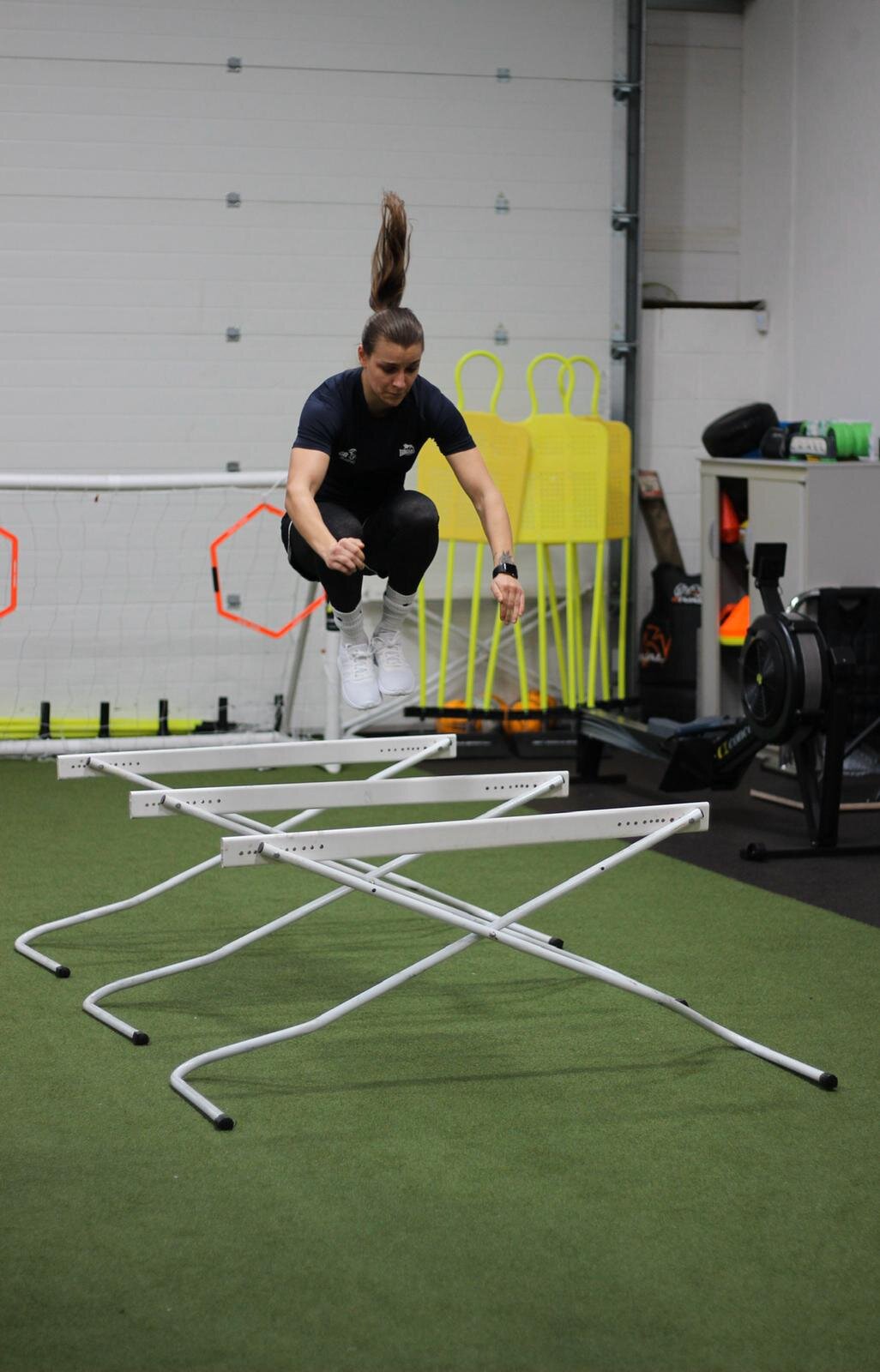This Article is Sponsored by Studio 9 Fitness. The Premier Sports Performance Facility in Wokingham, Berkshire.
Plyometric exercise refers to those activities that enable a muscle to reach maximal force in the shortest possible time. Plyometric exercise is a quick, powerful movement using a pre-stretch or countermovement that involves the stretch-shortening cycle.
The purpose of plyometric exercise is to increase the power of subsequent movements by using both the natural elastic components of muscle and tendon and the stretch reflex.
Functional movements and athletic success depend on both the proper function of all active muscles and the speed at which these muscular forces are used. The term used to define this force-speed relationship is power. When used correctly, plyometric training has consistently been shown to improve the production of muscle force and power.
Lower body plyometrics are appropriate for virtually any athlete and sport which require athletes to produce a maximal amount of muscular force in a short amount of time.
Data from Boxing Science how shown a strong relationship between jump height and medicine ball throw distance. This suggests the higher you can jump, the harder you can punch. The ability to jump is reliant on the amount of impulse produced from the lower body.
Lower body plyometric drills include jumping in place, standing jumps/pogos, multiple hops and jumps, bounds, box drills and depth jumps.
Rapid, powerful upper body movements are requisites for many sports including boxing.
Punching forces in amateur boxing are around 2500 N… If you weigh 70 kg (11 stone or 154 lbs), you’ll exert about 700 N of force just stood still. That makes punching force about 3.5 times body mass.
Plyometric training of the shoulder joint would not only increase punching velocity, it may also prevent injury to the shoulder and elbow joints, although further research is needed to substantiate the role of plyometrics in injury prevention.
Exercises include medicine ball throws and slams, catches and explosive push ups.
Traditional resistance training exercises may be combined with plyometric movements to further enhance gains in muscular power. For example, performing a squat jump with a load of 30% of 1RM as an external resistance further increases performance. This is an advanced form of complex training that is appropriate only for athletes who have previously participated in high intensity plyometric training programmes.
We are Built not Born.
www.builtnotborn.co.uk
Laura Pain
Team GB Representative Boxer
Reference:
https://boxingscience.co.uk/explosive-training-boxing/
NCSA Essentials of Strength Training and Conditioning

